Related Topics
[Motherboard] Troubleshooting - No Power/No Boot/No Display
When you press the power button to turn on the computer but there is no display on the monitor, please follow the below steps to troubleshoot :
6. Test with minimal components, isolating the possible cause
a. Please check if the connection of the power cord and electric socket are well connected as shown below. If there is a main power switch on the extension cord, please make sure it is switched on. If it still can't power on, please replace the extension cord or electric socket.
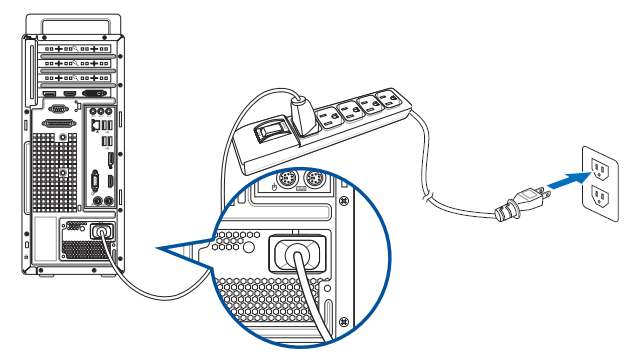
b. Make sure the power switch at the back of the power supply is on, as shown below:

c. Check the power cable of power supply is correctly connected to ATX power connectors. Some motherboard may contain 8-pin EATX12V_1, 4-pin EATX12V_2 and 24-pin EATXPWR, we suggest to connect all three connectors to the power supply.
(Model name of photo below is PRIME Z490M-PLUS)

d. Replace a known good power supply
1. Enter ASUS Download Center to check compatibility of the motherboard and the CPU.
Input your model name, click [CPU/Memory Support] (Example: ROG CROSSHAIR VII HERO),

Click [CPU Support] and check if your CPU is in the QVL list for compatibility as below, and check if the BIOS version is as the recommended one or the later version than recommended.
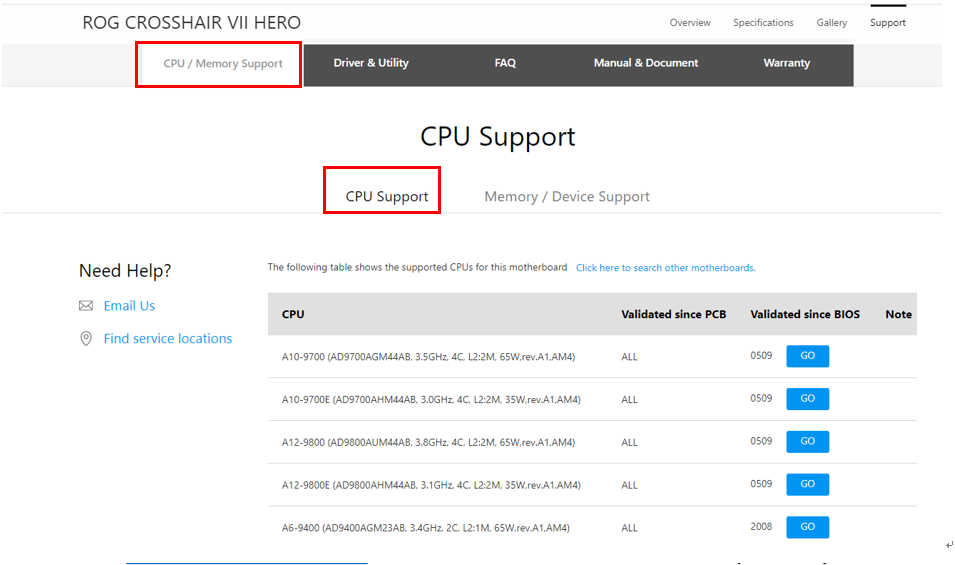
b. If the display cable connects to the on-board display port, and still shows no display, please refer to official website of your CPU vendor AMD or Intel, to check if your installed CPU supports on-board graphics.
c. If you have confirmed your CPU supports on-board graphics, but still have no display, please try to re-install CPU and check if the CPU pin or CPU socket is dirty as below. If yes, please clean it and try again.
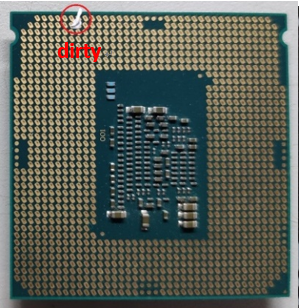
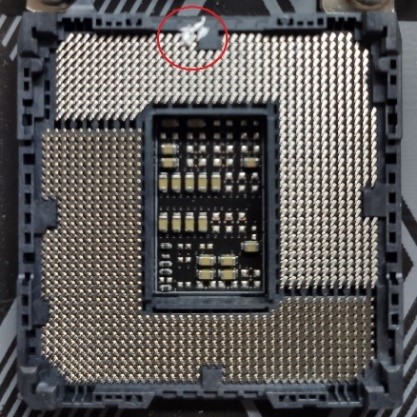

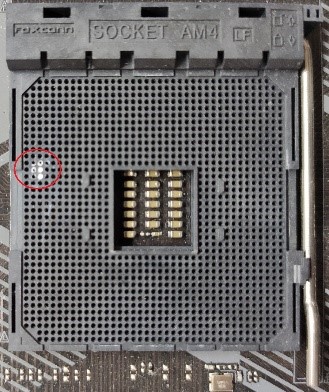
d. Check if CPU pin is broken. If yes, please replace a known proper CPU.
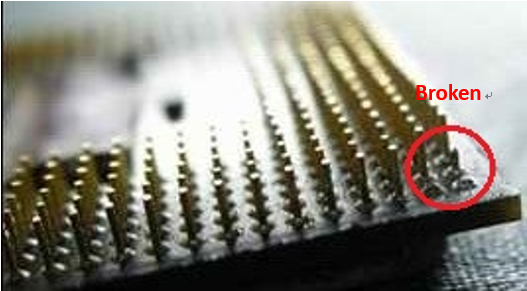
1. Re-install the memory, and check the memory is fully installed as shown below.
Incorrect case:

Correct case:

b. If it has no display when you install two or more memory, please check whether problem can be solved by installing only one memory . Then try to install the other memory to eliminate memory problem.
c. Please replace your DRAM with the one on Memory support list(QVL list)
You can refer to How to query Memory QVL list
d. Please try as [recommended memory configurations] in user manual of the motherboard:
(Example: PRIME Z390-A)
e. How to install memory on the motherboard and precautions? Please refer to FAQ: [Motherboard] How to install memory on the motherboard and precautions
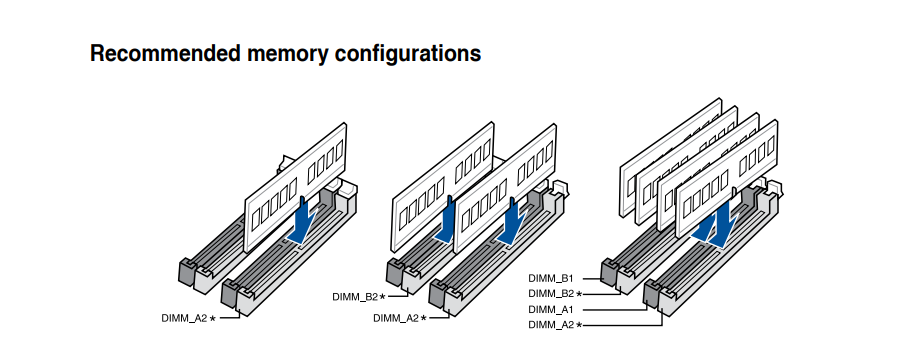
If the external graphics card is connected to the motherboard without any display, please follow the below steps to troubleshoot
a. Please try to re-install the external graphic card and confirm the display cable is correctly connected to the display output.
b. Please try to display from the integrated graphics of the motherboard (if CPU has no function of on-board graphics, please ignore this step). Please power off, then remove the external graphics card and connect the display cable to the integrated graphics output port, as indicated in below green marked. If the integrated graphics port can display, it means that the external graphics card may have some issues, please replace a known good graphics card.
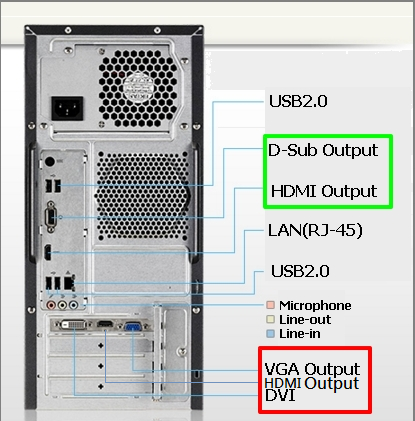
(Note: The outputs of the graphics card may vary from its series and models)
c. If the external graphic card has a power interface, make sure that the power interface is correctly connected as shown below:

a. Please make sure monitor is powerd on normally and check the indicator light of monitor is on to ensure the power cable of the monitor is connected correctly. Make sure the external power cable is powerd on normally as shown below. Please try to switch on, switch off and switch on the power of the socket, check if monitor can display. If you switch off and switch on the monitor, monitor shows ''no signal'', it indicates the monitor is powerd on normally.
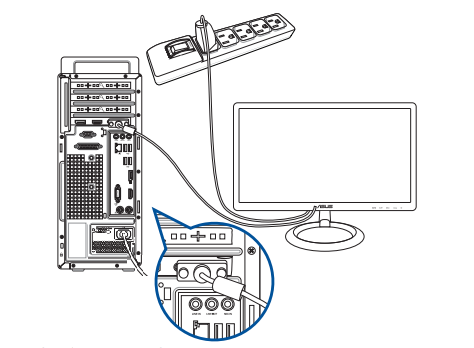
b. Confirm that the signal cable(VGA/DVI/HDMI/DisplayPort) is correctly connected to the monitor, also confirm that the other end of the signal cable is connected to the display output (graphics card) of the computer. Try to replug the two tops of the display cable and confirm that all pins are not bent.
c. Confirm that the display output of the monitor is correct. For example, if it currently connected to the computer via HDMI interface , you should choose the display output of the monitor as HDMI display output.
d. Replace the same kind of cable (VGA/DVI/HDMI/DisplayPort) to re-test
e. Connect the monitor to another computer, confirm output of the monitor is normal to eliminate monitor problem
Test with minimal components, isolating the possible cause
Please follow the below instructions to remove all external devices and confirm again.
a. Keep the CPU, CPU radiator fan and a single DRAM installed on the motherboard
b. Remove all the USB devices and external cards from the motherboard, including the mouse, keyboard, USB flash disk, SSD, external PCI-E Cards, etc.
c. Remove all the cables connected to the Motherboard ,including LAN cables, audio cables. Only leave one monitor connected to verify the display.
d. Then try to re-boot the computer. If it can power on normally, the problem may be from the removed external devices. Re-connect the external device one by one until you find which external device or cable causes the problem.
If it stilll has no display, please power off and try to: Clear CMOS
Note: if you adjust the BIOS option (for example, adjust the voltage or other options due to overclocking), you can also try to clear the CMOS recovery BIOS option and restart if there is no display at startup
If your motherboard supports ASUS Q-LED function, please try: ASUS motherboard troubleshooting via Q-LED indicators
You can also troubleshoot by the sound from the buzzer of the motherboard, refer to : buzzer to troubleshoot monitor display issues
If the problem still can't be fixed, please contact ASUS Product Support
Q&A:
Q: How to check what Bios version your motherboard is shipped with?
A: Please refer to the FAQ: https://www.asus.com/support/FAQ/1044755/